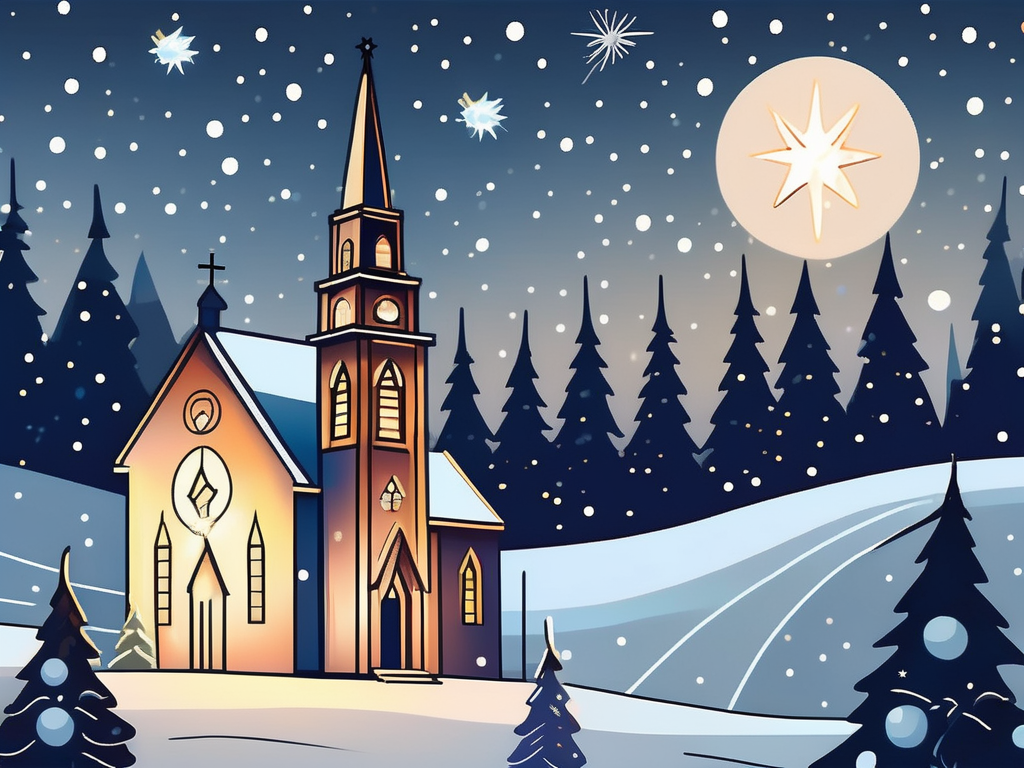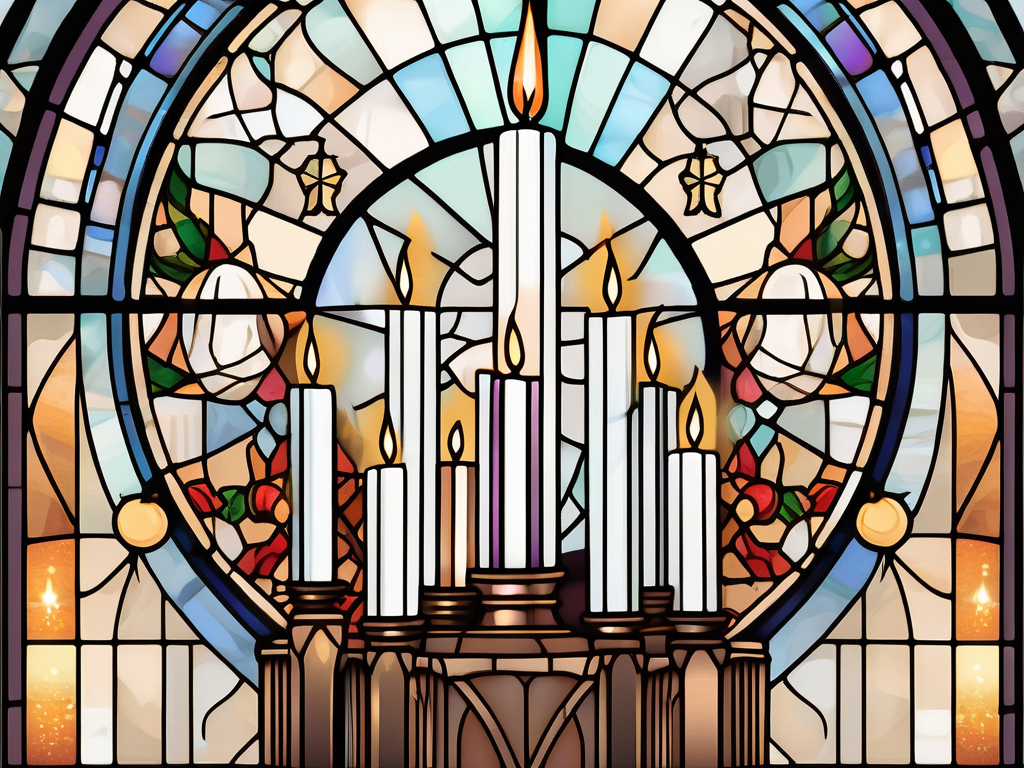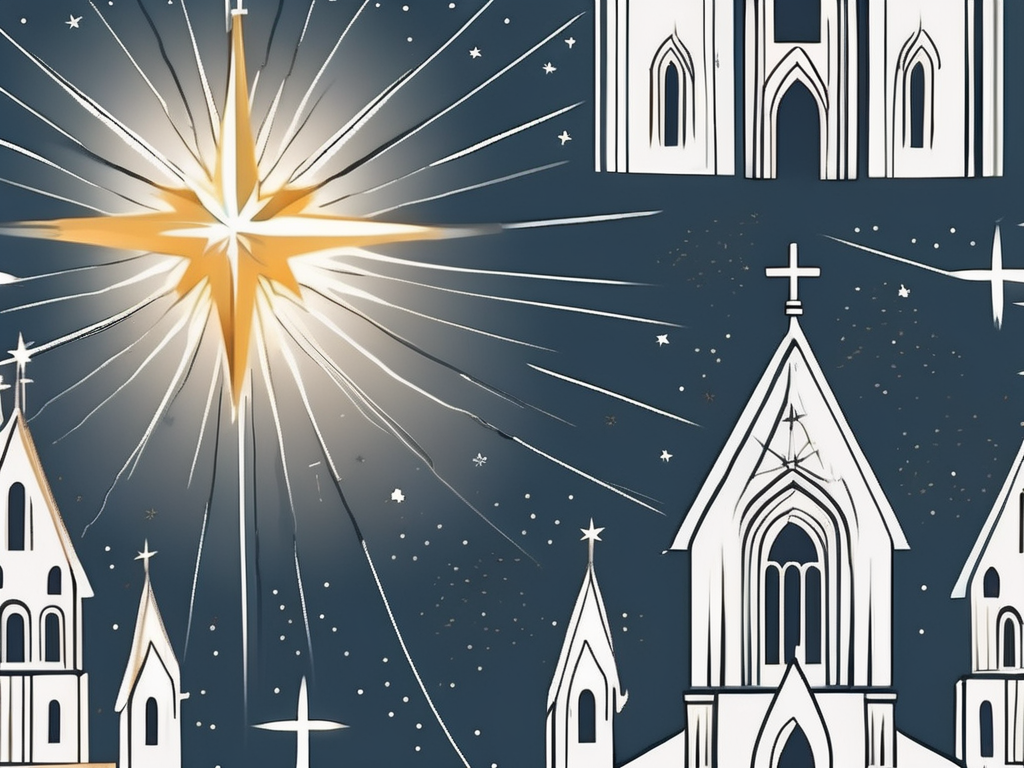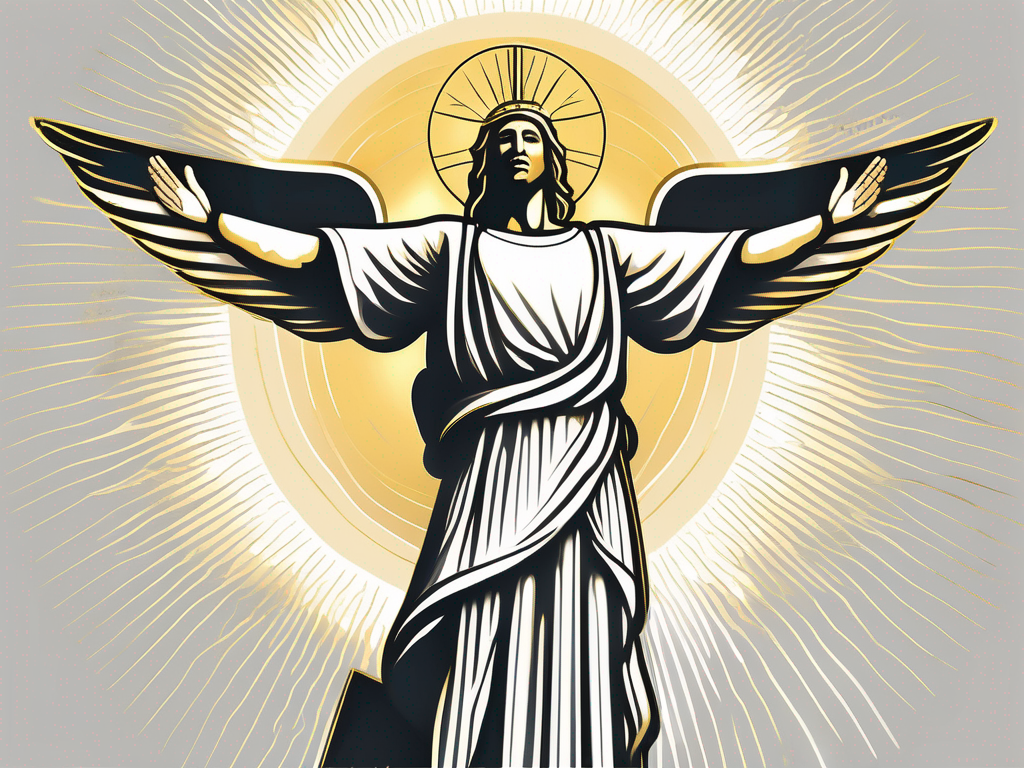Christmas is one of the most widely celebrated holidays around the world, but it holds a particularly special place in the hearts of Christians. This article seeks to dive deeper into the significance of Christmas in Christianity, exploring its theological importance, historical origins, traditions, liturgical aspects, and even controversies and misconceptions surrounding the holiday. By understanding the roots of Christmas in Christianity, we can gain a richer appreciation for this joyous celebration.
Understanding the Significance of Christmas in Christianity
At its core, Christmas holds immense theological importance for Christians. It commemorates the birth of Jesus Christ, who is believed to be the Son of God and the savior of humanity. This miraculous event is considered the cornerstone of the Christian faith, as it signifies God’s ultimate act of love and redemption for humanity. Christmas serves as a reminder of the fulfillment of God’s promise to send a Messiah to deliver his people from sin and bring salvation.
Moreover, Christmas is not just a mere historical event; it is a celebration of the profound impact that Jesus’ birth had on the world. It symbolizes hope, peace, joy, and love – values that lie at the heart of Christian teachings.
The birth of Jesus, celebrated on Christmas, is a momentous occasion for Christians worldwide. It is a time when believers reflect on the significance of God’s entry into the world as a vulnerable baby, born to a humble couple in Bethlehem. This act of divine humility demonstrates God’s deep love and compassion for humanity, as He willingly chose to experience the human condition and identify with our struggles and joys.
Christmas is not only about the birth of Jesus but also about the anticipation and preparation leading up to this joyous event. The season of Advent, which precedes Christmas, is a time of spiritual reflection and expectation. It is a period of waiting and longing for the coming of the Messiah, a time to prepare our hearts to receive the gift of God’s grace and salvation.
Throughout history, Christmas has been celebrated in various ways across different cultures and traditions. From the solemn midnight Masses to the vibrant nativity scenes, each custom and ritual adds depth and richness to the celebration. The exchange of gifts, for example, mirrors the ultimate gift of Jesus Christ to the world, while caroling spreads the joyous news of His birth.
Furthermore, Christmas is a time when families and communities come together to share love, laughter, and fellowship. It is a season of generosity and kindness, as people extend a helping hand to those in need. The act of giving during Christmas echoes the selflessness of God’s gift to humanity and encourages believers to emulate His example by showing compassion and care for others.
Christmas also holds a special place in the hearts of children. The anticipation of Santa Claus, the magical decorations, and the enchanting stories of the nativity create a sense of wonder and awe. It is a time when children learn about the story of Jesus’ birth and the values of love, forgiveness, and humility.
In conclusion, Christmas is a significant and cherished holiday in Christianity. It represents the birth of Jesus Christ, the Son of God, and serves as a reminder of God’s love, redemption, and salvation for humanity. It is a time of reflection, anticipation, and celebration, where believers come together to share joy, hope, and the message of Christ’s love with the world.
The Historical Origins of Christmas
While the exact date of Jesus’ birth remains uncertain, the tradition of celebrating Christmas on December 25th can be traced back to the early Christian church’s efforts to establish a distinct holiday for honoring Christ’s birth.
But how did this tradition come to be? Let’s delve into the fascinating historical origins of Christmas.
Early Christian Celebrations of Christmas
In the first few centuries after Jesus’ birth, Christians did not have a specific day to celebrate his birth. The focus was primarily on his death and resurrection, which were considered the most significant events in Christian theology. However, as Christianity spread and gained prominence, the need for a day to commemorate Jesus’ birth became apparent.
It was in the fourth century that Pope Julius I officially declared December 25th as the date for celebrating Christmas. This choice was not arbitrary but rather influenced by the winter solstice festivals already observed during that time. These festivals, celebrated by various cultures, marked the shortest day of the year and the return of longer daylight hours. By aligning Christmas with the winter solstice, early Christians could intertwine their religious celebrations with existing cultural traditions, making it easier for people to embrace the new holiday.
With the establishment of December 25th as the official date for Christmas, Christians began to develop specific rituals and practices to commemorate the birth of Jesus. Churches held special services, and believers gathered to sing hymns, offer prayers, and reflect on the significance of Christ’s arrival on Earth.
The Evolution of Christmas Over Centuries
As Christmas spread throughout different regions and cultures, various customs and practices were incorporated, resulting in the diverse holiday traditions we see today. These traditions evolved over centuries, blending Christian beliefs with local customs and folklore.
One of the most iconic symbols of Christmas, the Christmas tree, has its roots in ancient pagan traditions. Evergreen trees were believed to possess magical properties and were used in winter solstice celebrations to symbolize life and rebirth. Early Christians, seeking to make their message more relatable, adopted the use of evergreen trees as part of their Christmas festivities. Over time, the trees became associated with the story of Adam and Eve and the Tree of Life, further solidifying their place in Christmas celebrations.
Another beloved tradition, gift-giving, has its origins in the biblical story of the three wise men who presented gifts to the baby Jesus. This act of giving became a central part of Christmas celebrations, symbolizing the love and generosity that Christ’s birth represents.
Throughout history, Christmas has been celebrated in various ways across different cultures. From the colorful parades of Latin America to the solemn midnight masses in Europe, each region has added its unique touch to the holiday. These diverse traditions reflect the universal desire to create a festive atmosphere that uplifts spirits and fosters a sense of community in celebrating the birth of Jesus.
So, the next time you gather around the Christmas tree or exchange gifts with loved ones, remember the rich history behind these traditions. Christmas is not just a day on the calendar; it is a celebration that has evolved over centuries, carrying with it the stories and customs of countless generations.
Christmas Traditions in Christianity
Christmas in Christianity is a time filled with rich traditions and meaningful observances. One of the key aspects of Christmas is the observance of Advent – a period of preparation for the birth of Jesus Christ. Advent typically begins on the fourth Sunday before Christmas and lasts until Christmas Eve. It serves as a time of anticipation, reflection, and spiritual growth, reminding Christians to focus on the true meaning of Christmas.
During the Advent season, Christians engage in various practices to deepen their faith and prepare their hearts for the celebration of Christ’s birth. Many churches hold special Advent services, where scripture readings, prayers, and hymns are used to guide worshippers through the journey of anticipation and hope. Advent calendars, with their daily opening of doors or windows, are also popular among families, as they provide a tangible way to count down the days until Christmas.
Another integral part of the Christmas tradition is the use of decorations, such as Christmas trees, wreaths, and nativity scenes. These decorations hold symbolic significance and play a significant role in creating a festive atmosphere. The Christmas tree, adorned with lights and ornaments, is a symbol of everlasting life and the light of Christ. It serves as a reminder of the tree of life in the Garden of Eden and the tree on which Jesus was crucified.
Wreaths, often made of evergreen branches, are another common Christmas decoration. The circular shape of the wreath represents eternity and the unending love of God. Each element of the wreath, such as the holly leaves and berries, carries its own symbolism. The holly, with its prickly leaves and red berries, represents the crown of thorns that Jesus wore on the cross, while the berries symbolize his blood shed for humanity’s salvation.
Nativity scenes, depicting the birth of Jesus in a stable, are also prominently displayed during the Christmas season. These scenes serve as a visual representation of the story of Jesus’ humble birth and the arrival of the shepherds and wise men to pay homage to the newborn King. They remind Christians of the miraculous event that took place in Bethlehem over two thousand years ago and the profound impact it has had on the world.
Christmas decorations are not merely ornamental; they hold deep spiritual meaning. They are meant to evoke a sense of joy and beauty, emphasizing the importance of Jesus’ birth and the hope he brings to the world. As Christians gather around the Christmas tree, light the Advent candles, and set up nativity scenes, they are reminded of the incredible love and grace of God, who sent his Son to be the Savior of the world.
The Liturgical Aspects of Christmas
Within Christianity, Christmas is marked by special liturgical practices, with Christmas Mass being a central ritual for believers. This sacred gathering allows Christians to come together as a community to worship, reflect, and celebrate the birth of Jesus. The Mass includes scripture readings, prayers, sermons, and the singing of hymns or carols dedicated to the joyous occasion.
In addition to Mass, Christmas carols play a significant role in worship during the holiday season. These melodious songs not only add to the joyful atmosphere but also serve as a way to praise and express gratitude for the gift of Jesus’ birth.
As the anticipation builds in the days leading up to Christmas, churches around the world begin to prepare for the special liturgical celebrations. The decorations are carefully chosen to create an atmosphere of reverence and awe. The altar is adorned with vibrant flowers and greenery, symbolizing new life and the hope that Jesus brings.
During the Christmas Mass, the readings from the Bible recount the prophecies of the birth of Jesus and the fulfillment of those prophecies in the New Testament. These readings serve as a reminder of the significance of Jesus’ birth and the fulfillment of God’s promise to send a Savior.
The prayers offered during the Christmas Mass are filled with gratitude and praise. They reflect the deep sense of awe and wonder at the miracle of the Incarnation, where God became human in the form of Jesus. These prayers also acknowledge the challenges and struggles faced by humanity, seeking God’s guidance and strength in the midst of the joys and sorrows of life.
One of the highlights of the Christmas Mass is the sermon delivered by the priest or minister. This sermon provides an opportunity for the congregation to reflect on the meaning of Christmas and how it relates to their own lives. The sermon may explore themes such as love, hope, and the importance of sharing God’s love with others, especially during the holiday season.
Throughout the Mass, the congregation joins in singing hymns and carols that have been sung for generations. These songs not only celebrate the birth of Jesus but also convey the deep emotions and spiritual significance of the Christmas story. The melodies and lyrics of the carols uplift the spirits of the worshippers and create a sense of unity and joy among the congregation.
As the Christmas Mass draws to a close, the sense of awe and wonder lingers in the hearts of the worshippers. The liturgical aspects of Christmas serve as a reminder of the profound mystery and beauty of the Incarnation. They invite believers to deepen their faith, reflect on the significance of Jesus’ birth, and carry the message of love and hope into the world.
Controversies and Misconceptions About Christmas
While Christmas is predominantly viewed as a religious celebration, there are controversies and misconceptions surrounding its origins and commercialization.
The Debate Over Christmas’s Pagan Roots
Some argue that Christmas has pagan roots and that the choice of December 25th was intentionally aligned with existing winter solstice festivals. While there are ancient celebrations during this time, the Christian interpretation of Christmas balances acknowledging historical influences while primarily focusing on the birth of Jesus. The intention was not to syncretize beliefs but rather to provide an opportunity for meaningful worship and evangelization.
Commercialization of Christmas: A Christian Perspective
Another criticism is the commercialization of Christmas, which tends to overshadow its religious significance. The emphasis on gift-giving, extravagant decorations, and materialistic pursuits can distract individuals from the true essence of the holiday. However, many Christians strive to strike a balance by emphasizing the importance of faith, family, and acts of kindness during the season.
In conclusion, Christmas in Christianity represents far more than just exchanging presents or enjoying festive decorations. It is a deeply rooted celebration that holds theological, historical, and cultural significance. By understanding the true essence of Christmas, Christians can embody the values it represents and foster a stronger connection to their faith.












